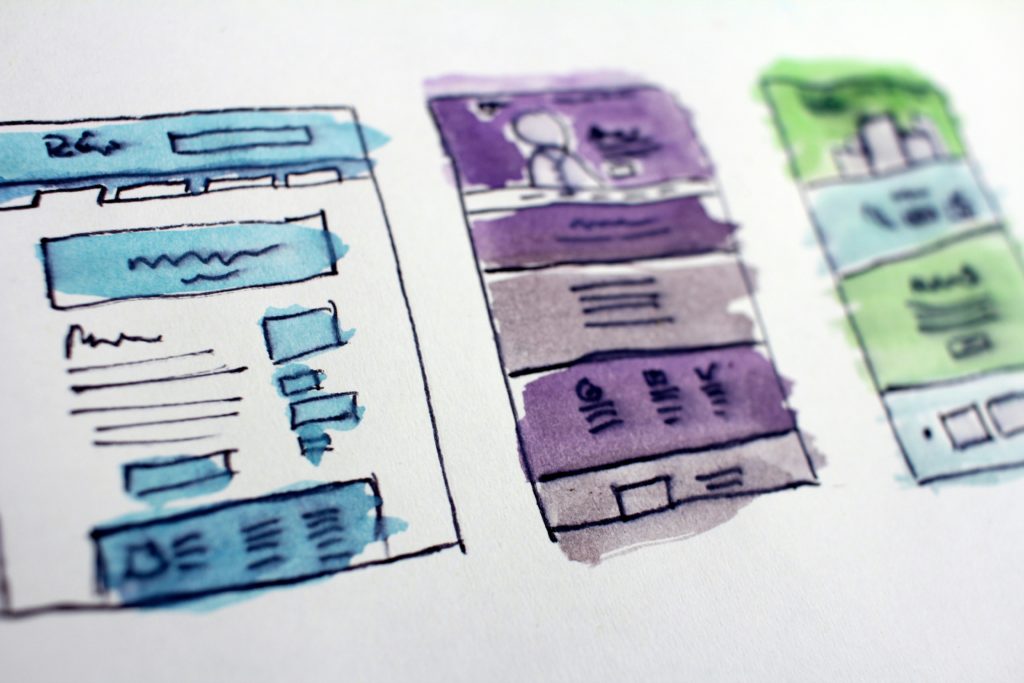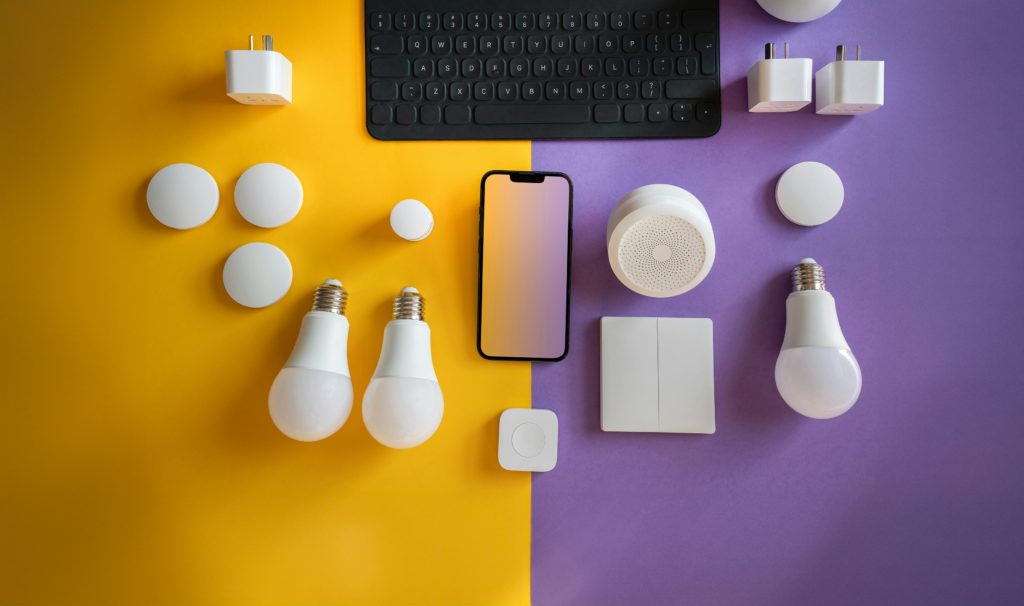
Eco-design: a more sustainable approach to IoT
In a global context where environmental protection has become an absolute priority, eco-design of IoTs offers an opportunity to reconcile technological innovation and sustainability. By rethinking its approach, the tech industry can significantly reduce its environmental impact.
Smart & Connective has taken up the eco-design challenge for its CEOS PLC, the brain behind its Light BMS. Will he be relieved? Let’s find out more together!
Eco-design: what are we talking about?
Eco-design can be defined as an approach that integrates environmental issues throughout the life cycle of a product or service.
Issues
The aim of this approach is to identify upstream the potential environmental impacts that the product or service could generate, in order to reduce them.
In particular, it aims to manage resources more efficiently, reduce greenhouse gas (GHG) emissions and preserve biodiversity.

Multidimensional approach
To achieve these objectives, eco-design is based on a multidimensional approach, integrating different aspects throughout the development and manufacturing process:
- Life Cycle Assessment (LCA): LCA evaluates the overall impact a product can have on the environment, throughout its life cycle. By global impact, we mean reasoning that goes beyond carbon impact and takes into account all impacts (e.g. biodiversity).
- Longer product life: Designing for maximum product life reduces the need to produce new products, thus cutting the consumption of precious resources.
- Choice of materials: Opting for more environmentally-friendly materials (durable, recyclable, low-impact) helps limit the depletion of non-renewable resources.
- Energy efficiency: Optimizing the energy consumption of products helps reduce their carbon footprint, while extending their autonomy and promoting the path to sobriety.
- Facilitating recycling and dismantling: Designing products to facilitate recycling and dismantling at the end of their life enables materials to be recovered and reused efficiently, reducing the amount of waste and pressure on natural resources.
The current state of the IoT: an environmental perspective

In the ever-changing technological landscape, the IoT is emerging as one of the most dynamic sectors, promising breakthroughs in fields as diverse as industry, health and the environment (GreenTech).
What’s more, the IoT is not limited to industrial uses, as it extends to various aspects of our daily lives. With billions of connected objects worldwide, they are now ubiquitous in our lives: smartphones, tablets, connected watches, thermostats, smart fridges… we all have them!
Behind this innovation, however, lies an often overlooked reality: theenvironmental impact of IoT.
It is crucial to reiterate the urgency of reducing the environmental footprint of this sector. Each stage of the process poses major environmental challenges, including :
- Extraction of raw materials: The extraction of minerals such as silicon and cobalt contributes massively to the destruction of ecosystems and the depletion of natural resources. It is also a vector for socio-economic tensions.
- Manufacturing: The manufacturing processes for electronic products require large quantities of energy and water, as well as the use of harmful products, resulting in significant pollution of biodiversity.
- Energy consumption: Electronic devices such as IoTs operate continuously, which represents a considerable energy load, increasing electricity demand and adjacent GHG emissions.
- Electronic waste and recycling: With programmed obsolescence, IoTs often have a limited lifespan, contributing to the rise in electronic waste (WEEE). Yet this waste has an impact on both the environment and health, given the toxic substances present.
Did you know?
To produce a 2kg computer, it is necessary to extract 800kg of raw materials. (Source: ADEME)
Case study: Smart & Connective reinforces its commitment with the eco-design of its CEOS controller
As a reminder, Smart & Connective has developed an innovative, turnkey BMS Light based on IoT technology, for large-scale energy savings in existing commercial buildings.
CEOS: The Brain of Light Smart & Connective BMS
The brain of the Light Smart & Connective BMS, the CEOS PLC, is a true source oflocal intelligence , enabling automatic control of the building’s energy-intensive devices, including HVAC (Heating, Ventilation, Air Conditioning) and lighting.

To meet the energy-saving scenarios defined in advance on the online portal, CEOS uses the industrial protocols present in the building for several tasks:
- Collect data from sensors and actuators ;
- Analyze data ;
- Communicate energy-saving rules.
Its on-board intelligence enables it to maintain the application of energy-saving rules even in the event of loss of Internet connection, guaranteeing fast, effective energy savings.
To go even further, CEOS offers the option of storing data locally for several weeks, thus ensuring operational continuity. What’s more, its secure start-up and update system guarantees the integrity and reliability of the entire BMS.
CEOS: What changes?
To meet the eco-design challenge, Smart & Connective’s technical teams carried out 3 major overhauls on the PLC.
1. Changing the microprocessor
First of all, let’s remember that the microprocessor refers to the information processing unit that executes instructions to perform a specific task. It plays a crucial role in managing operations and decisions within the system.
In other words, it’s essential for the operation of CEOS.
WHAT HAS BEEN DONE: REPLACEMENT OF THE MICROPROCESSOR BY A 2X LESS POWERFUL ONE
Why this choice?
Opting for a less powerful microprocessor means optimizing other elements to meet technical constraints and to be in line with Smart & Connective’s very raison d’être: saving energy.
This modification optimizes the performance of CEOS and adjusts power to actual requirements, thus saving energy in the broadest sense of the term.
This makes it possible to :
- Fewer resources used in manufacturing
- Lower GHG emissions
- Less energy consumption
How does this modification not affect product performance?
It is important to bear in mind that eco-design should not be chosen at the expense of the product’s technical performance. A combination of initiatives is therefore needed to meet this challenge.
2. Code optimization
The code present in our PLC can be defined as the set of written and executed algorithms enabling it to operate, collect data, process information and interact with other IoTs.
Being the brain of the BMS, the code is located on 3 levels on CEOS: On-board intelligence – Operating system – Firmware.
WHAT HAS BEEN DONE: REVIEW THE ENTIRE CODE
Why this choice?
- Reduced energy consumption
- Extended autonomy
- Increased product life
- WEEE reduction
- Minimize bugs and maintenance costs
The work of Smart & Connective’s developers has enabled us to maintain the same level of PLC performance.
3. Intelligent storage
Storage here refers to all the digital data recorded by the PLC, stored on the Cloud.
WHAT’S BEEN DONE: INTELLIGENT SELECTION OF DATA TRANSFERRED TO THE CLOUD BASED ON SELECTED RULES
Why this choice?
By regulating the data sent, we avoid overloading the cloud.
Servers are a colossal source of pollution, not only because of the impact of their manufacture, but also because of the quantity of resources needed to run them, such as energy and water.
This modification allows :
- Less energy consumption
- Lower GHG emissions
- Less impact on biodiversity
- Less electronic waste
Eco-design results on CEOS
For the same performance, the new version of CEOS consumes 50% less energy than its predecessor!
Why is this good news?
Firstly, it shows that more sustainable and sober solutions exist in the technology industry.
Secondly, energy efficiency plays a crucial role in reducing the impact of the use phase and energy demand, thus responding to a major challenge: energy sobriety.
Naturally, the benefits of these actions go beyond quantifiable energy savings. As mentioned above, the benefits are multi-factorial (conservation of resources, increase in lifespan, reduction in WEEE, etc.).

Development opportunities
- Improving storage economy
To further enhance the impact of our GTB Light, we could imagine going even further in terms of storage savings, across our entire ecosystem.
- Integration of sustainable and recyclable materials
The use of a recycled casing could reduce the overall environmental impact of CEOS’ production and end-of-life phases.
It’s important to note, however, that some recycled materials can have a higher carbon impact, while being much more sustainable in other respects: the point here is to take a global view of impacts.
- Legislative developments
More far-reaching eco-design legislation could encourage manufacturers to adopt this approach. This could take the form of obligations, but also financial support, as eco-design is often associated with monetary constraints.
- Enhancing the value chain with IoT LCA data
It would be interesting to have comprehensive LCAs at global level, covering the entire value chain, in order to be able to eco-design more accurately and efficiently.
In short, eco-design is an obvious choice for Smart & Connective, whose DNA is energy efficiency and sobriety.
By striking a balance between technological innovation and environmental protection, we strive to show that energy efficiency and environmental responsibility can be reconciled. Moreover, to reinforce and maintain our commitment, we have carried out our first
carbon footprint
last year. A strategic starting point for decarbonization, particularly from an energy point of view.
